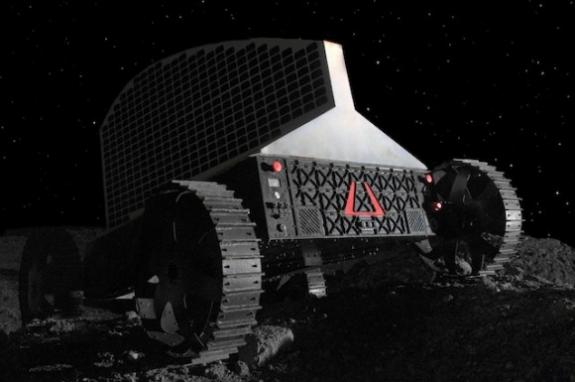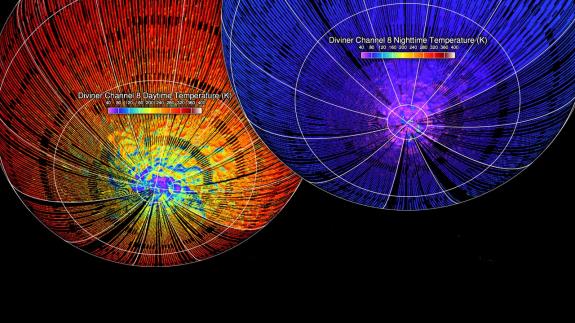 By Nathan Wong
By Nathan Wong
Part two of a five-part series about going back to the Moon, by Google Lunar X PRIZE technical consultant Nathan Wong.
We learned that getting to the Moon is not simple process, but the challenges do not end once we reach the surface. One of the main challenges associated with the Google Lunar X PRIZE is surface mobility, but there are also other challenges to consider that must be understood and overcome in order to complete any mission successfully. Out of the many difficulties associated with space travel and particularly lunar missions, we will look at five of the more important problems to solve: power, temperature, radiation, dust mitigation, and communications.
Power
Power is a critical subsystem on any space mission. Without power you will lose almost all of your capabilities; however, you will however be able to act as a very expensive paperweight ... in space. There are no power plants on the Moon so let's first take a look at how we can generate power.
The most widely used method of power generation in space missions is photovoltaic. This employs the same technology used by commercial solar panels here on Earth and the power generated is proportional to the surface area and angle of incident light. So for vehicles close to the equator the sunlight is directly overhead, whereas if the vehicle is at the poles the solar array should be perpendicular to the ground (this can be seen in the "Mohawk" of Astrobotic's Polaris rover).

The other option would be to use radioisotope thermal generators or RTG's such as the Mars Science Laboratory. RTG's use the heat from radioactive decay and convert that thermal energy into electrical energy. RTG's are not dependent on sunlight, so could be used to power a vehicle through the lunar night which lasts 14 days, but weigh much more.
Thermal
Temperature on the Moon can range from about 100°C (212°F) during the lunar day to -150°C (-238°F) during the lunar night. These types of environmental temperatures can cause a real problem for the components of a spacecraft when their traditional operating temperatures range is that of traditional Earth temperatures.

Heat can transfer in three ways; conduction, convection, and radiation. On Earth conduction and convection are the primary heat transfer methods, but due to the lack of an atmosphere in space the primary heat transfer mode is radiation. The amount of radiation heat transfer is dependent on the material properties absorptivity, or the amount of heat the spacecraft absorbs, and emissivity, which is the amount of heat the spacecraft can re-radiate back to the environment.
Since the spacecraft is absorbing in the visible light spectrum and emitting in the infrared spectrum materials can be chosen with appropriate absorptivity and emissivity for the desired equilibrium temperature, for example white paint has a low absorption in the visible light spectrum and a high emissivity in the infrared which would result in a cooler equilibrium temperature since more heat is being radiated to space than is being absorbed from the sun. This material selection is an example of passive thermal control. Active thermal control can also be used to regulate spacecraft temperature such as liquid cooling, but this requires power to be used.
Radiation
Radiation in the form of heat transfer is a non-ionizing form of radiation. We must also look at how particles from the sun can ionize substances and cause damage. On Earth we are lucky to have the magnetosphere that deflects incoming high-energy particles from the sun. Only a few of these particles make it to the surface of the Earth. The Moon normally orbits outside of the Earth's magnetosphere and has no magnetosphere of its own, so incoming particles from the sun continually bombard the surface of the Moon. These particles can cause damage in a number of ways, but the most concern for a robotic mission is the loss or corruption of data. The incoming radiation can disrupt sensors and provide inaccurate information.
In order to protect from this damage we can use physical techniques that absorb or deflect the incoming particles or we can use logical techniques that use computer programs to determine if information has been altered. In reality a combination of these two methods are used for redundancy and effectiveness.
Dust
The surface of the Moon itself provides one of the most difficult challenges to overcome. Since the Moon has no atmosphere, small meteorites have been hitting the Moon for billions of years. All of these impacts have turned the surface of the Moon into a fine "dust". Well more like tiny sharp particles of pain in the butt. We have some first hand experience with this dust from the Apollo missions, where suits were damaged due to dust interaction. Robotic missions must make sure to avoid having open area where the dust can get into joints and cause malfunction.
To make matters worse, treading a light foot on the lunar surface probably won't help. The high-energy solar wind particles have also been ionizing the dust on the surface of the Moon. This makes the dust highly electrostatic. Once an object reaches the lunar surface it is almost a certainty that the dust will cling to it.
Communications
How do you send and receive information to and from the Moon? This is a big question for the Google Lunar X PRIZE. Teams must send back HD video, photographs, and information to win the prize money, but don't have the convenience of an internet service provider like when we need to transfer information here on Earth.
Sending and receiving information from the Moon is more similar to sending information to an orbiting satellite than transferring information to Mars, mostly due to distance. Communication to Mars can take up to 45 minutes round trip, but a round trip to the Moon only takes about three seconds. In order to communicate with the Earth the vehicle must have some sort of antenna and a connection to a ground station on Earth to receive the signals. The amount of data that can be transmitted depends on the transmission power and the size of the antenna. Although high data rates are preferred a balance must be made so that the overall mass or power requirements of the spacecraft are not too high.
Conclusion
Reaching the Moon is only the first challenge in a long line of many that must be looked at and overcome in order to complete the Google Lunar X PRIZE and any lunar mission. Although there is much glory in spaceflight, it is important to understand the troubles and difficulties that are faced. These challenges make things cost more money and take more time than originally intended. Some of these difficulties are common to every space mission and have reliable and cost effective ways to solve some. Others are unique to the Moon where we haven't gone to the surface as a species in over 35 years, and will need true innovation in order to overcome those challenges. The next blog post in this series will talk about some of the advantages of going back to the Moon.
Visit X PRIZE at xprize.org, follow us on Facebook, Twitter and Google+, and get our Newsletter to stay informed.
This blog post is brought to you by Shell, our Exploration Prize Group sponsor.